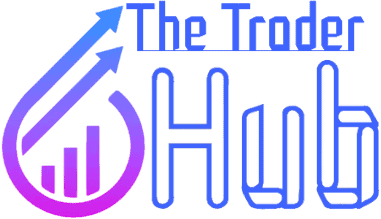Forex Trading Platforms Your Gateway to Effective Forex Trading
Discover, Compare, and Learn About Forex Trading Platforms
Welcome to the Forex Trading Platforms Resource Hub
In the dynamic world of Forex trading, having the right tools at your disposal is paramount to success. Our Forex Trading Platforms category is your go-to resource hub for all things related to the platforms that power your currency trading endeavours. Whether you’re a seasoned trader seeking the latest platform innovations or a beginner exploring the options available, you’ll find a wealth of articles and resources here to guide your journey. Dive into our curated collection, discover platform reviews, explore user experiences, and stay up-to-date with the ever-evolving landscape of Forex trading technology. Unlock the potential of Forex trading platforms with insights and information tailored to traders of all levels. Your gateway to effective FX trading starts here.
Our Forex Article
What is Leverage in Forex…
What is Leverage in Forex Trading? Introduction Leverage is a cornerstone concept in forex trading,…
What are the Major Currency…
What are the Major Currency Pairs In the dynamic world of forex trading, a deep…
Understanding Pips in Forex Trading…
Understanding Pips in Forex Trading Understanding Pips in Forex Trading In the world of forex…
What is Margin Trading &…
What is Margin Trading & How it Supercharges Your Trades Margin trading is a powerful…
Risk Management Strategies in Forex
Introduction to Risk Management Strategies Learn the Basics Forex trading offers exciting opportunities for investors…
Introduction to Trading Psychology
Understanding Trading Psychology: The Key to Consistent Profits Trading psychology plays a pivotal role in…
Introduction to Forex Trading Strategies
The Basics of Forex Trading Strategies: Your Roadmap to Profit Welcome to the exciting world…
Introduction to Technical Analysis
The Basics of Technical Analysis: Key Concepts Explained Technical analysis is a powerful and widely…
The Basics of Fundamental Analysis:…
Fundamental analysis is a powerful tool used by investors and traders to evaluate the intrinsic…
Forex Trading Unveiled
Forex Trading Unveiled: Understanding the Global FX Markets Forex trading, also known as foreign exchange…
Forex Trading 101 FAQ’s
A Forex trading platform is a software application that facilitates currency trading. It allows traders to access real-time market data, execute trades, analyze charts, and manage their trading accounts. A reliable and user-friendly trading platform is crucial because it directly impacts the efficiency and effectiveness of your trading.
Forex trading platforms come in various forms, including web-based platforms that run in browsers, downloadable desktop applications, and mobile apps for smartphones and tablets. Each type has its unique advantages and is suited to different trading situations and preferences.
To choose the right platform, consider factors like your trading style, device preferences, required features (such as charting tools or automated trading), and user-friendliness. Demo accounts can help you test platforms before committing to one.
Key features include real-time price charts, technical analysis tools, order types (market orders, limit orders, stop-loss orders), risk management features, and customization options. Ensure the platform offers features that align with your trading strategy.
Yes, MT4 and MT5 differ in terms of the number of timeframes, order types, and the ability to trade other assets beyond Forex pairs. MT5 offers more advanced features, making it suitable for a wider range of traders.
Ensure that your chosen platform is regulated by reputable authorities. Look for user reviews and testimonials, and verify the platform's encryption and data security measures. Be cautious of unsolicited offers or unregulated platforms.
Demo accounts provide a risk-free environment to explore a trading platform's features, practice trading strategies, and get comfortable with its interface. They are an essential tool for platform evaluation.
Some platforms may charge spreads, commissions, or fees for certain services. It's essential to understand the fee structure of your chosen platform and how it may affect your trading costs.
Subscribe to platform newsletters, follow official social media accounts, and regularly check the platform's website for announcements and updates. User communities and forums can also provide insights.
- Yes, you can switch between platforms. Start by opening an account with your new platform, transferring your funds and positions, and adapting to the new platform's interface. Be cautious of any platform-specific regulations.
- Mobile trading apps offer convenience and flexibility, allowing you to trade on the go. However, they may have limitations compared to desktop platforms, such as smaller screen size and fewer features.
- Take advantage of your platform's technical analysis tools, indicators, and customization options to tailor your trading environment to your strategy. Automate repetitive tasks where possible.
- Order execution speed is critical in Forex trading, especially in fast-moving markets. A faster execution speed can help you secure better prices and reduce slippage.
- Most platforms offer customization options like personalized layouts, color schemes, and indicator settings. Explore these options to create a workspace that suits your trading style.
- Yes, third-party add-ons or plugins can introduce security risks or instability to your platform. Only use add-ons from trusted sources, and ensure they are compatible with your platform version.
- Social trading allows you to connect with other traders, follow their strategies, and even copy their trades. Many trading platforms offer social trading features and communities for traders to interact.
- Troubleshooting may involve clearing cache and cookies, updating the platform, checking internet connectivity, or contacting customer support. Most platform providers offer technical support resources.
- Consider using features like sub-accounts or account groups if available. Maintain a clear record of each account's purpose and trading strategy to avoid confusion.
- Automated trading involves using pre-defined algorithms to execute trades automatically based on specific criteria. Most trading platforms support automated trading through Expert Advisors (EAs) or scripts.
- Platform-specific tips and hacks may include keyboard shortcuts, hidden features, or advanced charting techniques. Explore user communities and forums for platform-specific insights and tricks.










